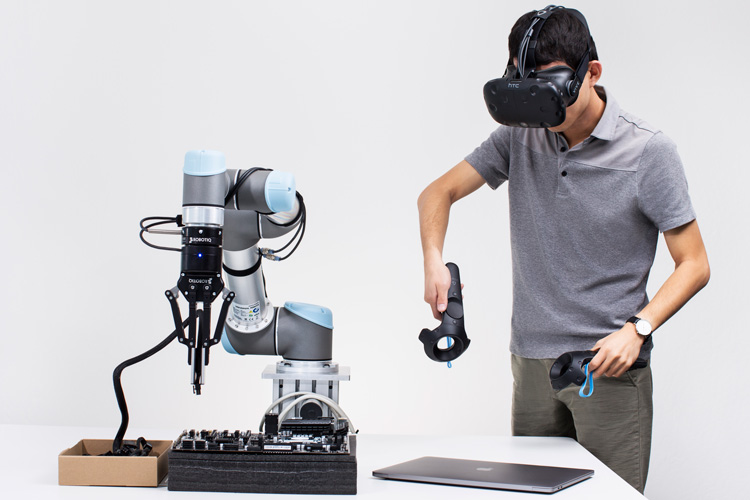Nobody doubts the importance of training. Before letting your employees handle and operate expensive, dangerous equipment, you want to make sure that they know their stuff. But how do they master the machinery if they’ve never touched it?
For a long time, we’ve relied on books, videos, or even just watching another employee, hoping that our recruit would absorb the skills, as if by osmosis. Luckily for us, virtual reality training can solve these problems.
1. Better Retention and Recollection
How much information do you think employees really retain after watching a video or reading an instruction manual?
Everyone knows that experience is the best teacher. Think about the difference between becoming a great basketball player by watching it on TV as opposed to getting out on the court and practicing.
VR training gives students a chance to practice with the machinery and develop personal memories that they can utilize when the time comes to use the actual equipment. In fact, most employees retain around 60% more from VR training than though from reading or listening to a presentation.
2. Realistic Scenarios
Sometimes, operating these machines can be stressful, especially for a newcomer. A single mistake can spell disaster.
That’s why having an opportunity to experience these realistic scenarios is so valuable. This type of immersive learning provides an avenue for becoming accustomed to operating heavy equipment.
3. Save Time and Money
Using virtual reality in education and training saves your company time and money. Period.
Because of the increased pace of learning, recruits gain competency much faster than they otherwise would. This, in turn, drastically reduces the costs of worker training and professional development.
4. Little to No Risk
It’s a little scary when a new employee, especially if they don’t have previous experience, takes the reigns for the first time at a machine that could harm your product, themselves, or other personnel.
The truth is that a lot of heavy machinery is dangerous if improperly used.
Virtual reality training gives us an alternative. In a controlled virtual environment, a trainee has the freedom to make mistakes. They can then learn from those mistakes without having to deal with the risks that those mistakes entail in reality.
5. Remote Training
The final advantage of VR learning is that we can do it remotely. That means that our recruit doesn’t have to be on-site, in the same city, or even in the same country. Let’s say that you’re an American business and you want to hire an employee from Canada. Instead of bringing them to your facility, you can set them up to train from their current location. This lets you know that they’ll be a good fit for the job and makes logistics much easier.
Now that you know what virtual reality can do for you, are you ready to take the plunge? We understand that it can be hard to get started, which is why we’re here to help. To get started with VR training for your business, contact VISARD today.
